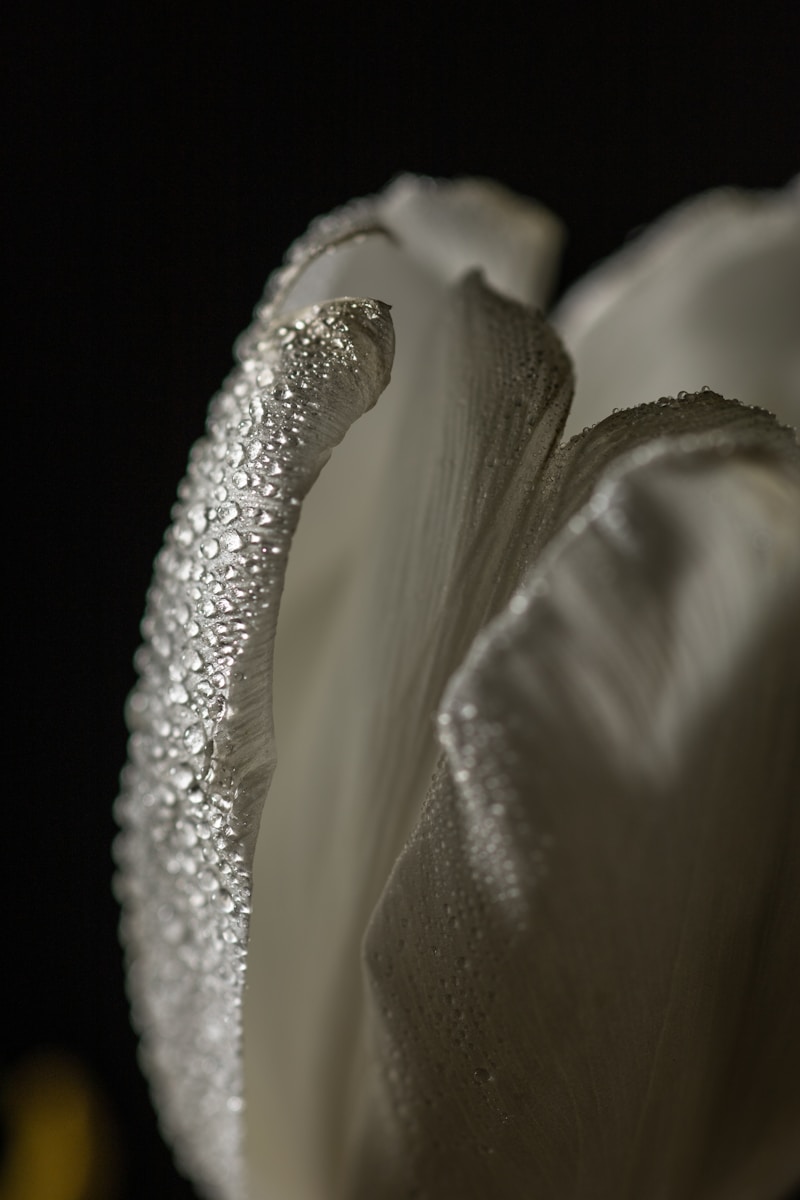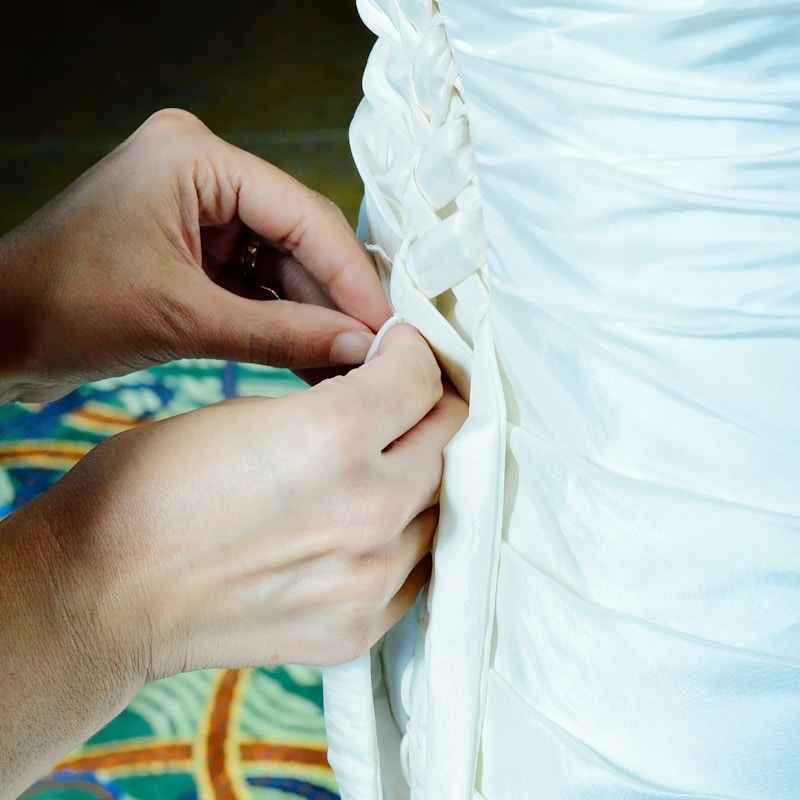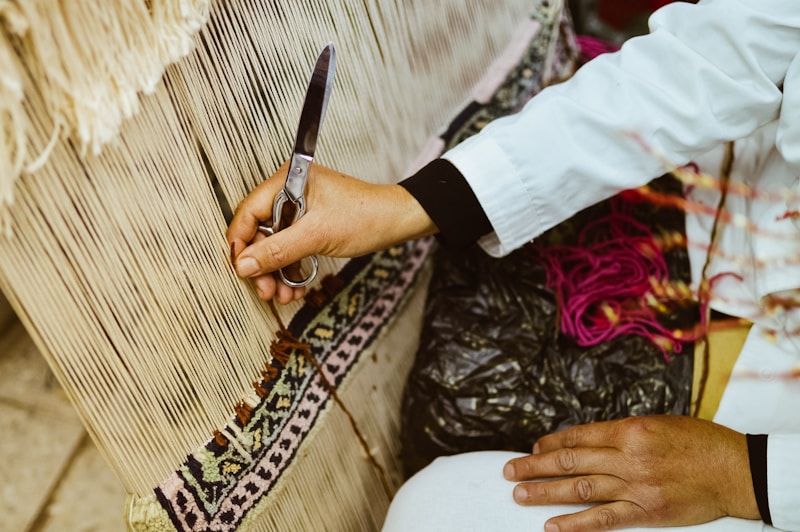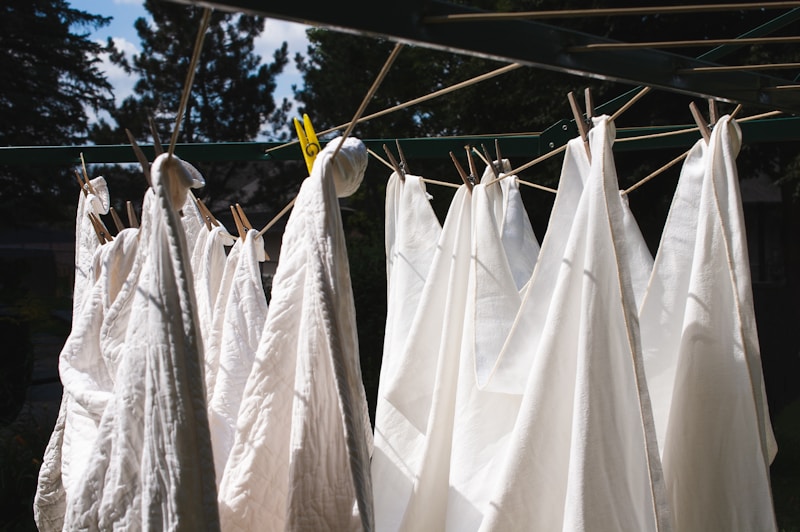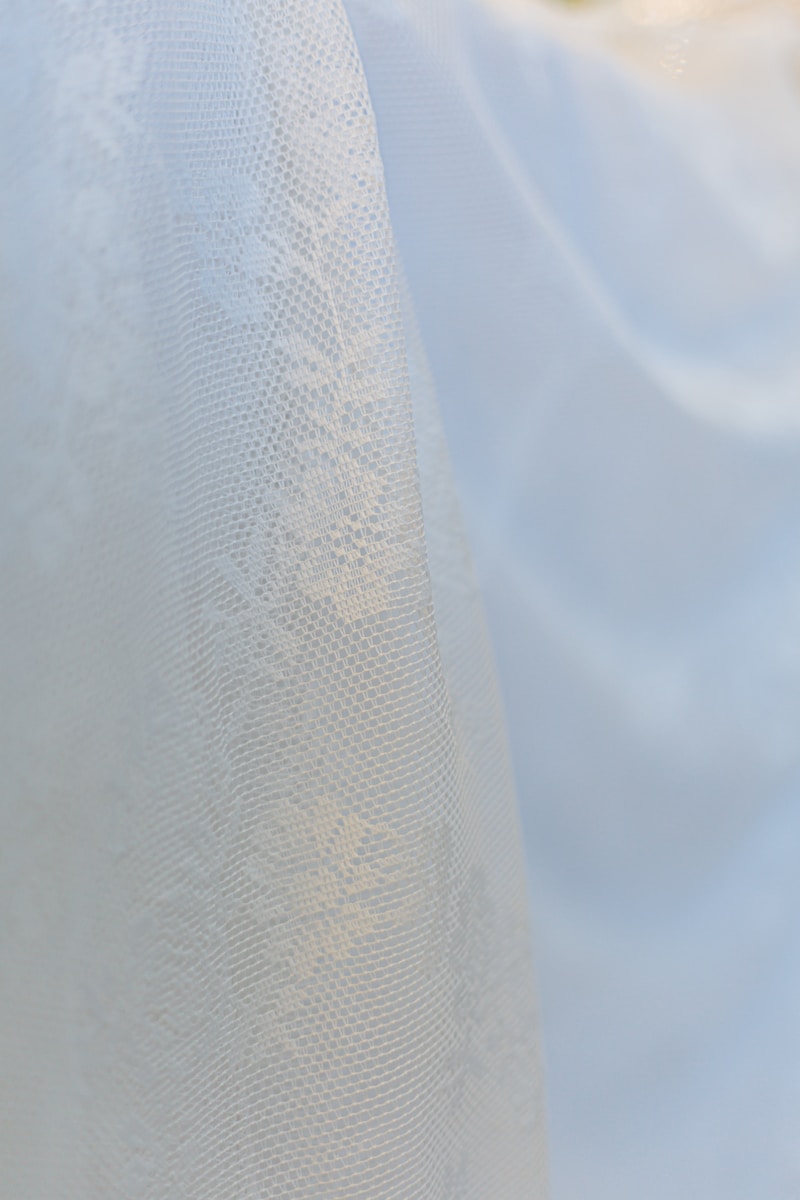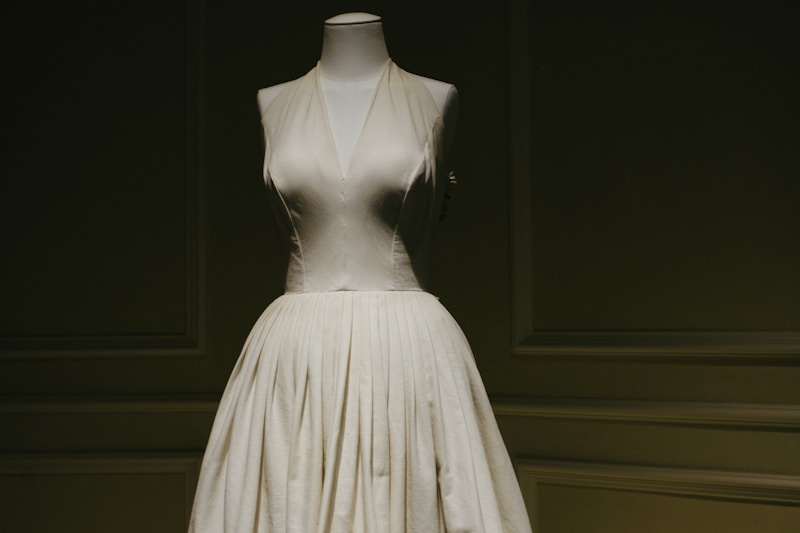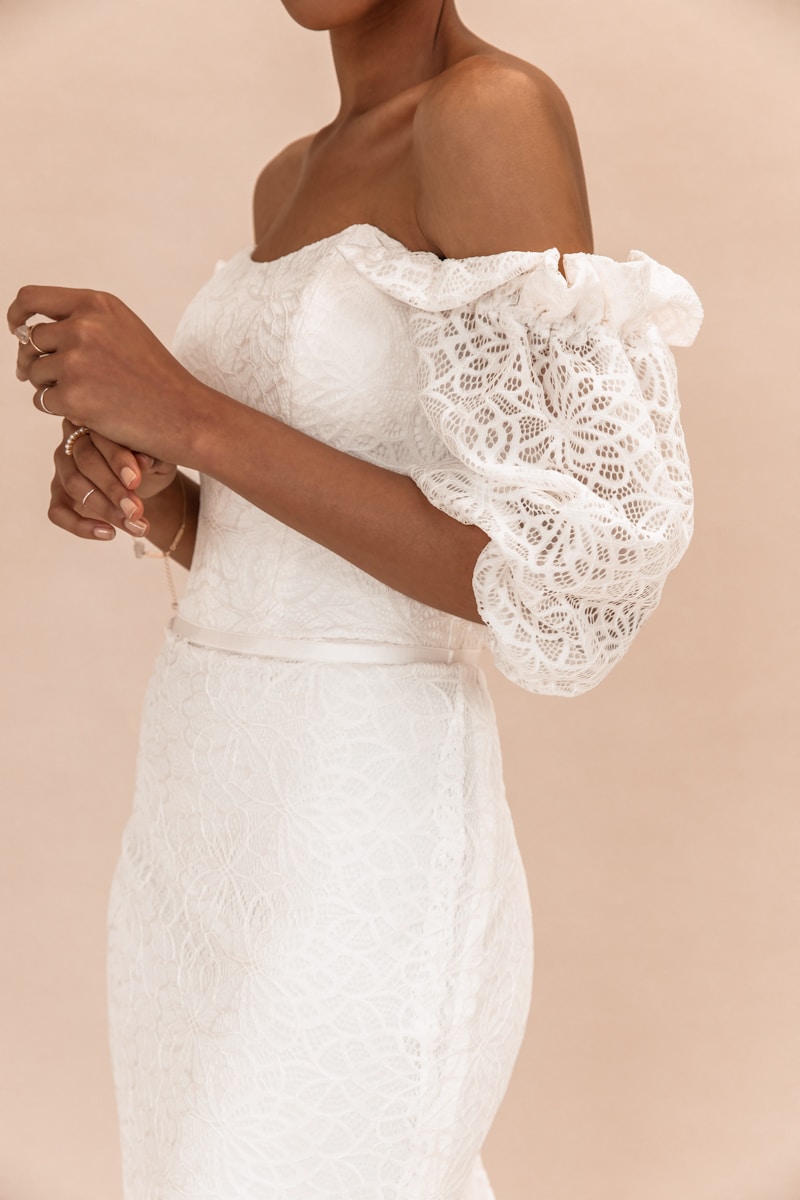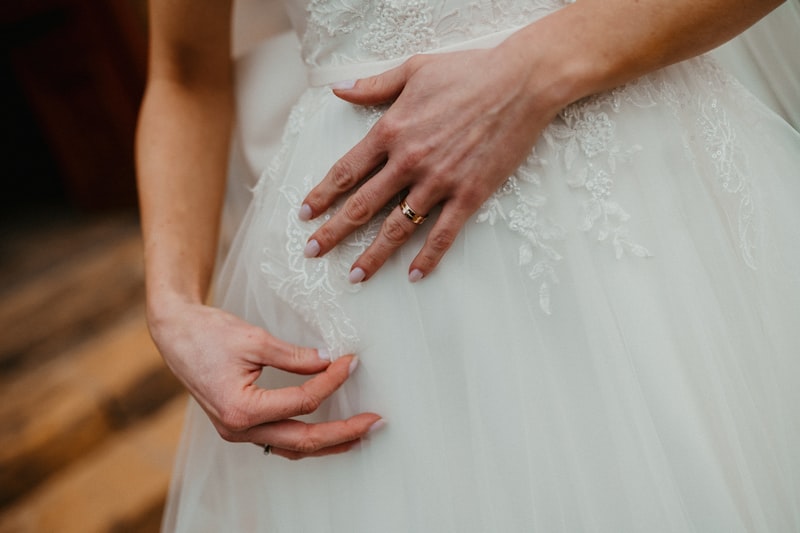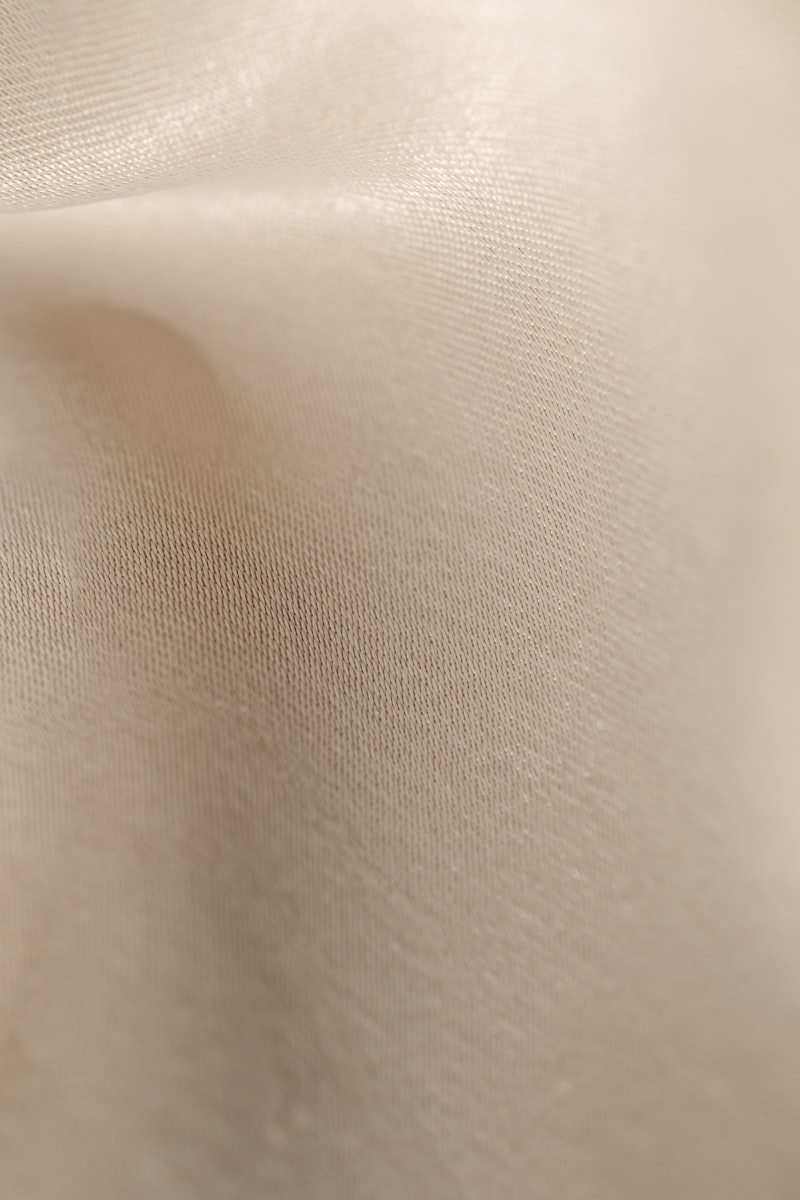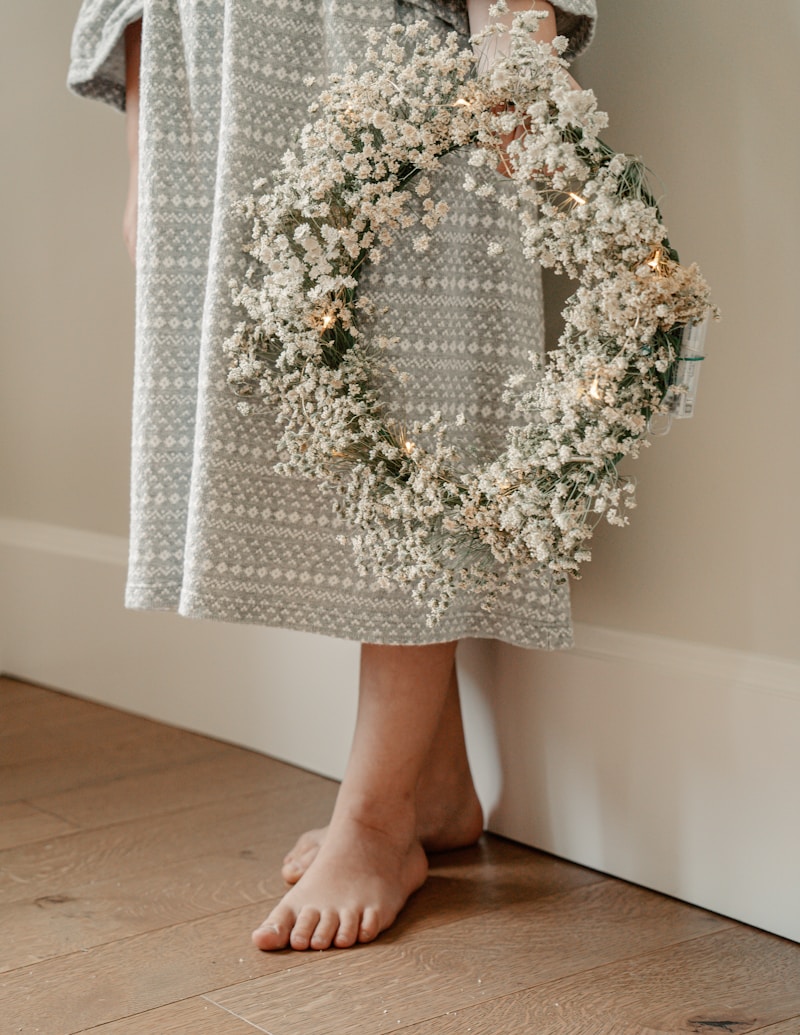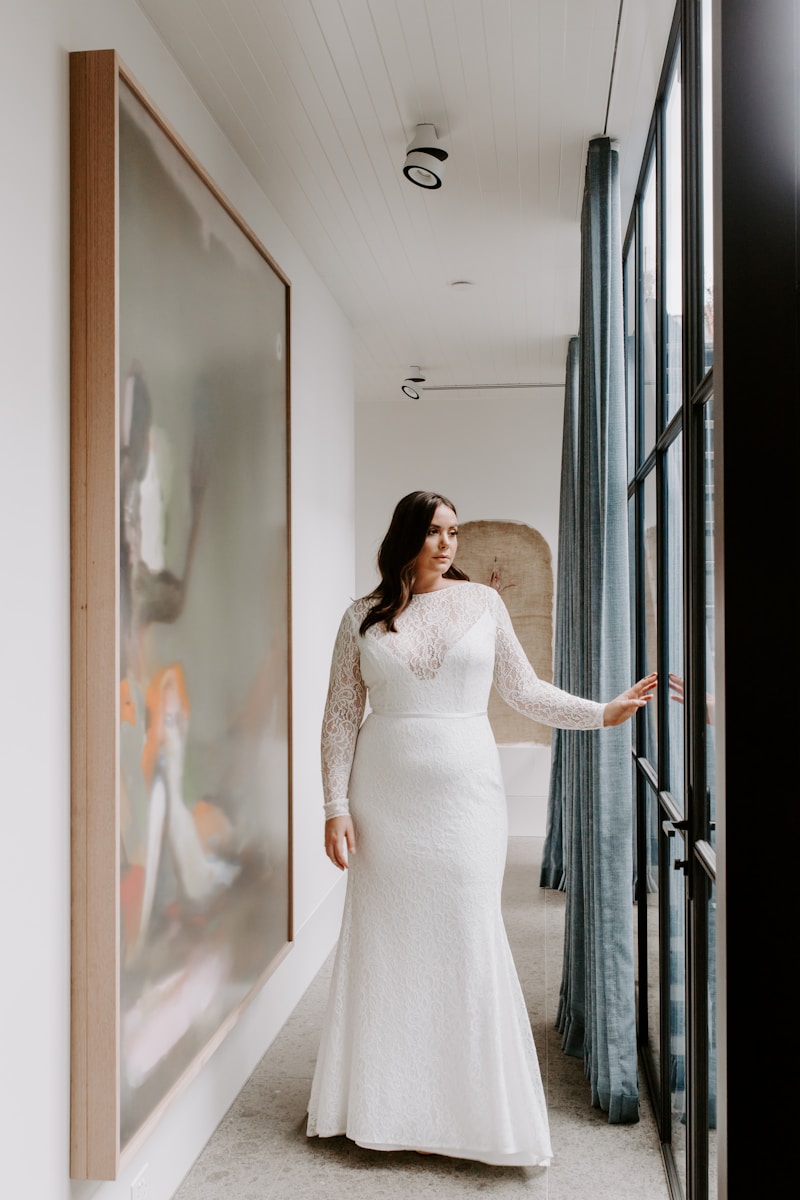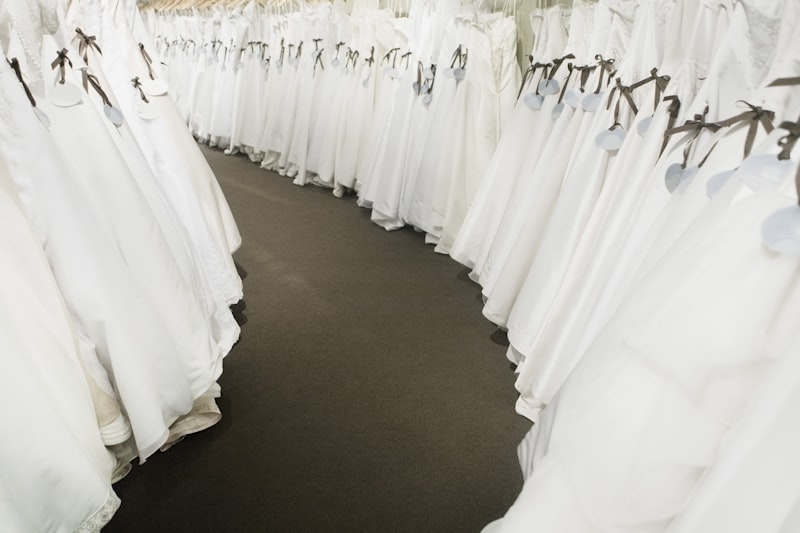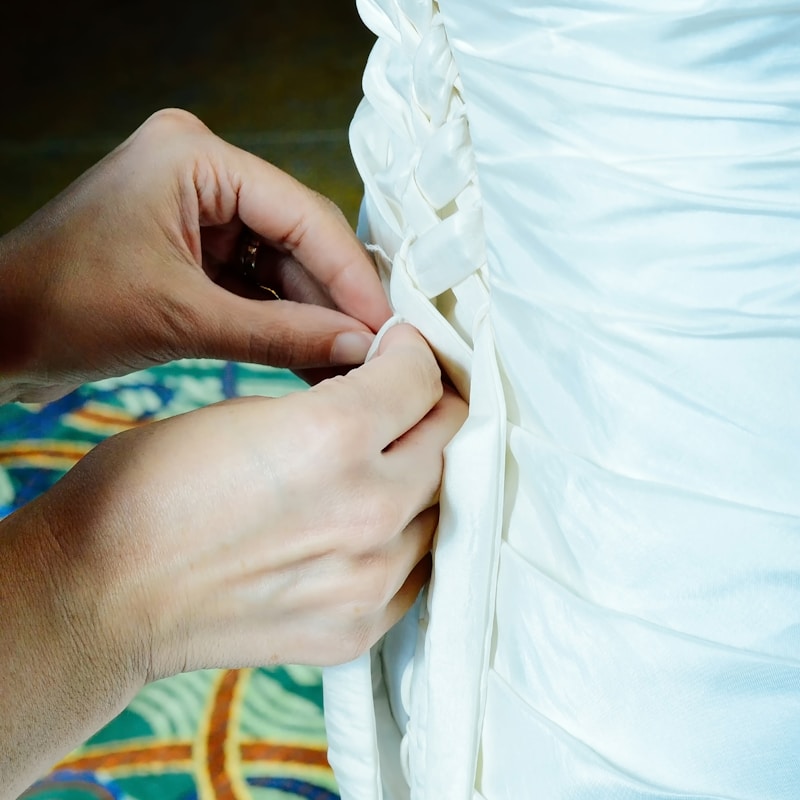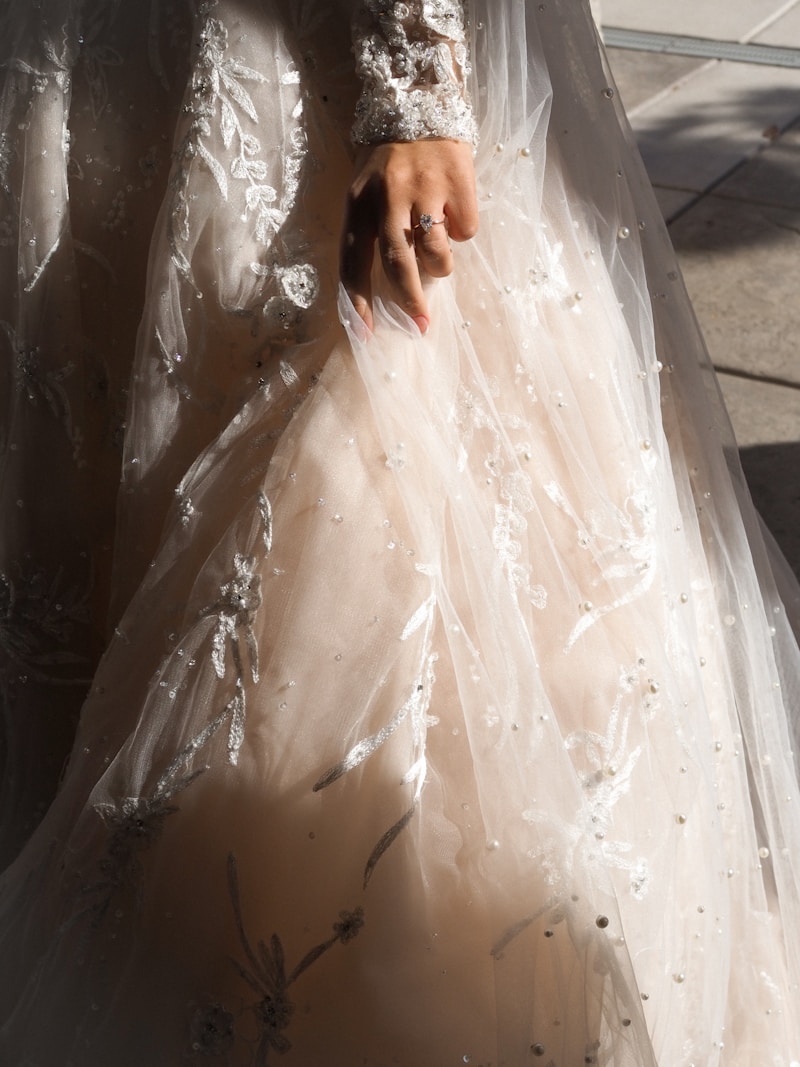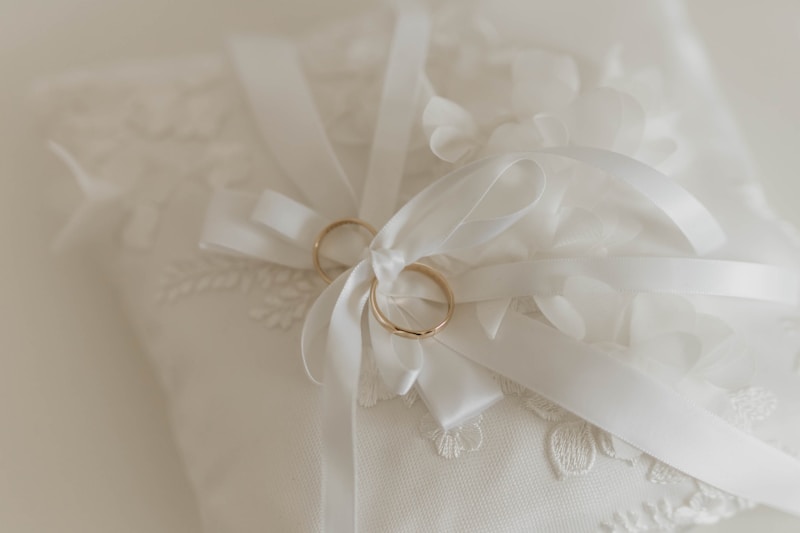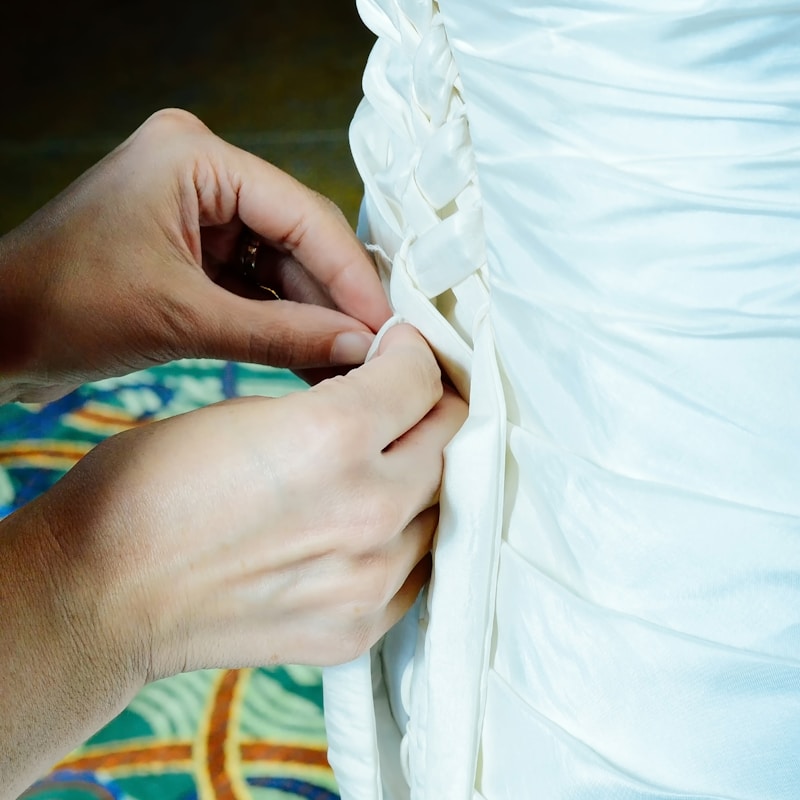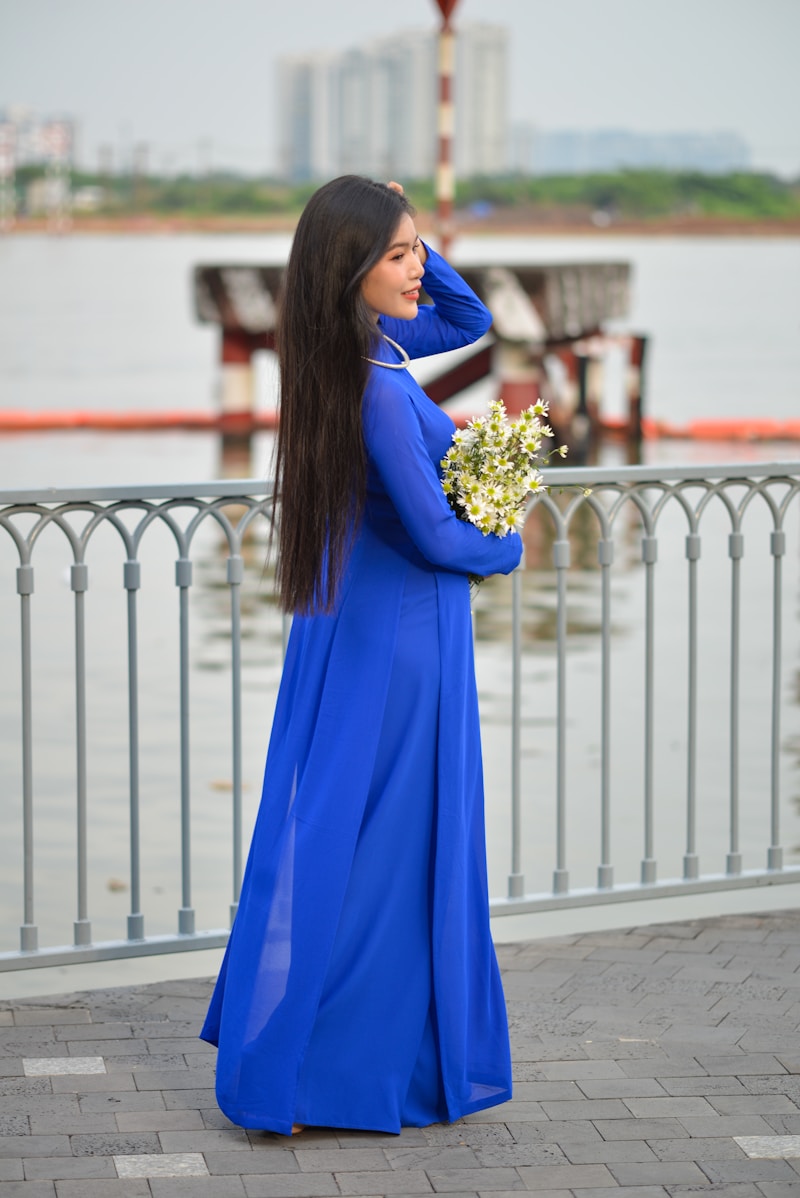Materials That Reflect Your Personal Style in Custom Wedding Dresses
Your wedding day is one of the most significant moments in your life, and what you wear plays a crucial role in creating unforgettable memories. A custom wedding dress allows you to express your individual style and personality, making your special day even more remarkable. One of the most vital components of creating a custom wedding dress is the selection of materials. In this article, we’ll explore the various materials that can reflect your personal style and how to choose the right ones for your dream dress.Understanding the Role of Fabric in Wedding DressesWhen designing a wedding dress, the choice of fabric is just as important as the cut and design. The fabric not only determines the look and feel of the dress but also influences how it moves and drapes on your body. Here are some common materials used in custom wedding dresses:MaterialDescriptionSatinA smooth, shiny fabric that has a luxurious feel and elegant drape.LaceIntricate and delicate fabric that adds texture and romantic flair.ChiffonA lightweight, flowy material perfect for ethereal and whimsical designs.TulleA net-like fabric ideal for creating volume and structure, often used in skirts.SilkA natural fabric known for its softness and luxurious look, available in various weights.OrganzaA thin, crisp fabric that provides structure and can be layered for added dimension.CrepeA textured fabric that offers a modern, sophisticated feel, perfect for sleek designs.VelvetA plush and rich fabric that adds depth and ...
Creating Contrast: Layering Different Fabrics in Bridal Dresses
In the world of bridal fashion, the art of layering different fabrics creates stunning contrasts that can elevate a wedding dress from ordinary to extraordinary. As brides seek unique ways to express their personalities on their special day, utilizing various textures, colors, and fabrics offers an innovative approach to bridal design. This article explores the nuances of creating contrast through fabric layering in bridal dresses, including styles, trends, and tips for brides-to-be.The Magic of Fabric LayeringLayering fabrics in bridal dresses is akin to painting with textiles. Different materials can convey various moods, making the dress not only a symbol of the wedding but also a testament to the bride's individuality. When done correctly, the combination of fabrics can enhance the silhouette and create visual interest. Here are some popular fabrics commonly layered in bridal gowns:Fabric TypeCharacteristicsTulleLightweight, airy, often used for skirts and overlays.SatinLuxurious, glossy finish; typically used for the main bodice.LaceIntricate, timeless, adds texture and detail to the gown.ChiffonSoft, flowing fabric casting gentle layers; perfect for romantic looks.OrganzaStiffer than chiffon, adds structure and volume.VelvetRich in texture, ideal for evening weddings.Creating Aesthetic AppealThe goal of layering different fabrics is to create a stunning visual effect. When combining materials, it's crucial to consider the dress's overall aesthetic. The interplay between...
The Influence of Seasonal Fabrics on Wedding Dress Selection
Weddings symbolize love and unity, and one of the most critical elements of a wedding is the wedding dress. With numerous styles, designs, and fabrics to choose from, the selection process can overwhelm brides-to-be. One of the most significant factors influencing wedding dress selection is the season in which the wedding takes place. Different seasons call for various fabrics, which can dramatically affect the look, feel, and comfort of a wedding gown. In this article, we will explore the influence of seasonal fabrics on wedding dress selection, providing insights into the best choices for each season.Understanding the Seasonal Changes in Fabric ChoicesWedding dresses are not only a reflection of personal style but are also influenced by the season. The selection of fabrics plays a pivotal role in determining the overall aesthetic and comfort of the dress. Here’s a breakdown of how seasonal changes affect fabric choices for wedding dresses.SeasonRecommended FabricsConsiderationsSpringLace, Chiffon, TulleLightweight, breathable options that can incorporate floral patterns.SummerSilk, Organza, SatinOpt for airy fabrics that allow freedom of movement in warm temperatures.FallVelvet, Mikado, Silk MikadoRicher textures and warm colors that complement autumn hues.WinterBrocade, Heavy Silk, SatinHeavier fabrics that provide warmth and can feature intricate details.Spring Wedding Dresses: Embrace Light and Airy FabricsSpring weddings often symbolize new beginnings, making them an id...
How to Incorporate Cultural Fabrics into Your Wedding Dress Design
Weddings are a celebration of love and unity, and increasingly, they are a reflection of individual and cultural identities. One of the most beautiful ways to honor your heritage is by incorporating cultural fabrics into your wedding dress design. In this article, we will explore how you can seamlessly blend traditional textiles with modern design elements, offering tips and advice along the way. Additionally, we will provide examples of various cultural fabrics that are popular for weddings, as well as FAQs related to this exciting topic.The Significance of Cultural Fabrics in Wedding DressesCultural fabrics have a unique ability to tell stories, express identity, and connect individuals to their roots. When choosing to incorporate cultural fabrics into your wedding dress design, you are not just selecting a material; you are weaving in history, tradition, and personal significance. Here are some reasons why cultural fabrics are significant: Symbolism: Fabrics can represent love, commitment, and familial ties. Heritage: They celebrate your cultural background and personal history. Uniqueness: Infusing traditional textiles ensures your dress is one-of-a-kind.Exploring Various Cultural FabricsThere are countless fabrics from around the world that can be beautifully incorporated into wedding dress designs. Below are some popular cultural fabrics and their characteristics:Fabric TypeOriginCharacteristicsUsage in Wedding DressSilkChina, IndiaLuxurious, smooth, and elegantFlowi...
Special Considerations for Plus-Size Wedding Dress Fabrics
Your Dream Wedding Starts with the Right FabricWhen planning a wedding, one of the most significant decisions is choosing the perfect wedding dress. For plus-size brides, finding a gown that flatters their figure while ensuring comfort is paramount. However, the choice of fabric can make all the difference in how the dress looks and feels. In this article, we will explore special considerations for plus-size wedding dress fabrics, offering valuable insights and recommendations that will help you make a well-informed choice.Understanding Different Fabric TypesWedding dresses come in a myriad of fabrics, each providing distinct aesthetics and sensations. Here is a quick overview of some common wedding dress materials:FabricDescriptionSilkLuxurious and smooth, silk drapes beautifully, making it ideal for elegant styles.TulleA lightweight netting that adds volume and charm, perfect for layers and veils.ChiffonSoft and flowy, chiffon creates a romantic look but may require lining for support.LaceA delicate option that adds texture and femininity, often used as an overlay.CrepeVery soft with a bit of stretch, crepe hugs curves and offers a comfortable fit.Key Considerations for Plus-Size Fabric Selection1. Fabric Weight and StructureWhen selecting fabrics for plus-size wedding dresses, consider the weight and structure. Heavier fabrics, like satin or crepe, can provide structure and support, which is often beneficial for plus-size brides. Lightweight fabrics may cling to certain ar...
Choosing the Right Fabric for Custom Wedding Dresses: A Comprehensive Guide
When it comes to planning a wedding, one of the most important decisions for brides is selecting the perfect custom wedding dress. Choosing the right fabric plays a crucial role in defining the overall look, feel, and cost of the wedding dress. In this article, we will explore various fabric options, tips for making the right choice, and factors to consider in the design process. This guide will also answer frequently asked questions about custom wedding dresses and their fabrics. The Importance of Fabric in Wedding Dresses The fabric of a wedding dress can dramatically affect its appearance, comfort, and style. It not only determines how the dress fits and flows but also influences how it interacts with light and movement. Understanding different fabrics is essential to making an informed decision that aligns with your vision for your big day. Common Fabrics for Custom Wedding Dresses Fabric TypeDescriptionProsCons SatinA luxurious fabric with a smooth, glossy surfaceElegant appearance, great drapeCan be heavy, may not breathe well ChiffonA lightweight, sheer fabric that adds an ethereal touchFlowy and romantic, great for layeringCan be delicate; not suited for structured designs LaceIntricate fabric often used for overlays or detailsTimeless elegance, offers textureCan be expensive; may require careful handling OrganzaA lightweight, sheer fabric often used in overlaysGives volume, adds sophisticationStiffness may not be comfortable, can be sheer TulleA net-like...
Understanding Draping Techniques for Custom Wedding Dress Fabrics
Mastering Draping Techniques for Stunning Custom Wedding DressesChoosing the perfect fabric for a wedding dress is as crucial as selecting the right design. Understanding draping techniques is vital for ensuring that your custom wedding dress not only looks beautiful but also flatters your figure. In this article, we will delve into different draping techniques, best practices for using various fabrics, and how to integrate these skills into custom wedding dress creation. Whether you’re a budding designer or a bride looking for unique options, this guide sheds light on everything you need to know.What is Draping?Draping is a technique in fashion design that involves arranging fabric on a dress form or model. It allows designers to visualize how the fabric falls and flows, making it crucial for creating intricate designs that are both aesthetically pleasing and structurally sound. By mastering draping techniques, one can create stunning wedding dresses that enhance the natural beauty of the wearer.Types of Draping TechniquesThere are several draping techniques that can be employed when designing custom wedding dresses. Here are some of the most popular methods:TechniqueDescriptionBias DrapingThis technique involves cutting fabric on the diagonal, allowing it to stretch and conform to the body’s curves.Asymmetrical DrapingCreating an uneven silhouette adds drama and modern flair to traditional wedding dress designs.GatheringGathering fabric involves pooling it at one point, whi...
Exploring Vintage Fabric Options for Modern Wedding Dress Designs
When it comes to wedding attire, brides are increasingly looking beyond the typical options found in contemporary fashion houses. Instead, many are embracing the timeless allure of vintage fabric options to create stunning modern wedding dress designs. In this article, we will explore various vintage fabrics, their characteristics, and how they can be incorporated into modern wedding dresses. Whether you are a bride seeking the perfect fabric or a designer looking for inspiration, this comprehensive guide will illuminate your path. Why Choose Vintage Fabrics? Vintage fabrics offer a unique charm that cannot be replicated in modern materials. They carry history and heritage, making them perfect for a bridal gown that tells a story. Here are some reasons why you might consider incorporating vintage fabrics into a wedding dress: Unique Texture and Patterns: Vintage fabrics often feature intricate patterns and textures that are hard to find in contemporary materials. Sustainability: By choosing vintage, brides can contribute to sustainable fashion, repurposing beautiful textiles rather than supporting fast fashion. Emotional Value: Vintage items often come with sentimental history, which can be particularly meaningful for wedding attire. Types of Vintage Fabrics for Wedding Dresses There is an array of vintage fabrics that can enhance modern wedding dress designs. Below are some of the most popular options: Fabric Description Ideal Use Lace ...
Lace Types and Their Impact on Custom Bridal Dress Design
Understanding Different Lace Types for Your Dream Bridal DressChoosing the perfect lace for your custom bridal dress is one of the most essential decisions a bride can make. Lace adds an element of elegance, texture, and depth to bridal gowns, transforming a simple design into something extraordinary. In this article, we will explore various lace types, their unique characteristics, and how they impact custom bridal dress design. We will discuss the most popular lace types, their historical significance, and tips for choosing the right lace for your wedding gown.The Allure of Lace in Bridal FashionLace has a long and storied history in bridal fashion, dating back to the 16th century. Originally made from fine threads of linen or silk, lace was a symbol of wealth and status. Today, lace is a staple in bridal couture, with numerous types and patterns available to suit every bride’s unique style. The type of lace chosen can significantly influence the overall aesthetic, texture, and feel of the wedding gown.Popular Lace Types and Their CharacteristicsUnderstanding the various lace types available will help brides make informed decisions. Let’s look at some of the most popular lace types used in custom bridal dress designs:Lace TypeCharacteristicsBest Suited ForChantilly LaceDelicate and lightweight, often features floral patterns.Vintage-inspired gowns.Alençon LaceCombines both floral patterns and a ribbon-like cord outline.Romantic and sophisticated dresses.Venise LaceHeavier l...
Embellishments and Their Material Compatibility with Wedding Gowns: A Comprehensive Guide for Brides
Choosing the perfect wedding gown is one of the most exciting aspects of planning a wedding. However, it can also be overwhelming, especially when it comes to understanding the various embellishments and their material compatibility with wedding gowns. In this article, we will delve into the world of wedding dress embellishments, their materials, and how they can elevate your bridal look. From lace overlays to beadwork, understanding these elements will help you make informed decisions.Understanding Wedding Gown EmbellishmentsWedding gown embellishments can truly transform a simple dress into a stunning piece of art. They add character, texture, and elegance, often becoming focal points of the gown. Here are some popular types of embellishments: Lace: An intricate fabric often used in overlays or accents. Beading: Pearls, crystals, or sequins sewn onto the gown to catch the light. Embroidery: Decorative stitching that can be used to create patterns or scenes. Appliqué: The technique of layering fabric patches onto the gown. Fringe and Feathers: These can add a bohemian touch, giving the dress movement.Material Compatibility with EmbellishmentsDifferent embellishments work better with specific fabrics. Here’s a breakdown of how various materials interact with different embellishments: Fabric Compatible Embellishments Silk Lace overlays, beadwork, embroidery Chiffon Light beading, appliqué, lace ...
The Benefits of Investing in High-Quality Fabrics for Your Dress
When it comes to fashion, the fabric of a dress plays a pivotal role in determining its overall appeal and longevity. High-quality fabrics not only enhance the aesthetic value of a dress but also offer numerous practical benefits. In this article, we will delve into the advantages of investing in high-quality fabrics for your dress, ensuring that your wardrobe remains stylish and durable for years to come.Why Choose High-Quality Fabrics?High-quality fabrics are made from superior materials that offer a wealth of benefits, both in terms of appearance and functionality. Here are some key reasons why choosing high-quality fabrics is essential for your dresses:1. Enhanced DurabilityHigh-quality fabrics tend to be more durable than their lower-quality counterparts. Whether it's silk, wool, or cotton, premium materials withstand wear and tear better, allowing your dress to maintain its shape and texture over time. Investing in high-quality fabrics means fewer replacements and repairs, ultimately saving you money in the long run.2. Optimal ComfortThe comfort level of a dress largely depends on the fabric used. High-quality fabrics are often softer and more breathable, making them more enjoyable to wear. For instance, a dress made from 100% cotton or premium linen will keep you cool during warm weather, while cashmere or high-quality wool can provide warmth and comfort in colder months.3. Superior Draping and FitHigh-quality fabrics drape beautifully, enhancing the overall silhouette...
The Journey of Fabric from Concept to Custom Wedding Dress
When you envision your dream wedding dress, do you ever stop to consider the journey of the fabric that transforms a concept into reality? The process from the initial design idea to the final custom wedding dress is not just a magical moment; it is a fascinating journey that involves various essential steps and expertise. In this article, we will explore this journey in detail, uncovering the importance of fabric selection, design ideation, fittings, and tailoring, and why each step is critical to creating the perfect bespoke gown.The Importance of Fabric in Wedding Dress DesignChoosing the right fabric is paramount in the design of a custom wedding dress. The fabric not only defines the gown's overall aesthetic but also its comfort and fit. Here are some common fabric types used in bridal wear:Fabric TypeDescriptionSilkLuxurious and smooth, silk drapes beautifully, making it a popular choice for elegant wedding dresses.LaceKnown for its intricate patterns and texture, lace adds a romantic and vintage touch to any wedding dress.TulleThis lightweight, net-like fabric is often used for skirts and garments requiring volume.ChiffonSoft and sheer, chiffon lends a dreamy quality to dresses, perfect for layers and flowing silhouettes.SatinA heavier fabric with a lustrous finish, satin offers a structured look suited for formal weddings.The Design Process: From Concept to CreationThe journey of fabric from concept to custom wedding dress begins with the design process. Bridal design...
Trends in Wedding Dress Fabrics: What's Hot This Year?
Weddings are a celebration of love, commitment, and individual expression, especially through fashion. One of the most significant decisions for a bride is choosing the right wedding dress, and the fabric plays a critical role in that choice. Understanding the current trends in wedding dress fabrics can help brides navigate their options. This year, several remarkable fabrics are emerging as frontrunners in the wedding dress market. Let's explore what's hot this year in wedding dress fabrics and how to select the perfect one for your big day. Current Trends in Wedding Dress Fabrics Every year brings new trends to the bridal fashion scene, influenced by cultural shifts, celebrity influence, and fashion innovations. This year, we’ve observed a return to some classic materials alongside the introduction of exciting new options. Below are the trending fabrics for weddings in 2023: Fabric Features Best For Satin Luxurious sheen, smooth texture Classic and elegant weddings Lace Delicate patterns, romantic feel Vintage-style and bohemian weddings Tulle Lightweight, airy, and voluminous Ball gowns and fairy-tale themes Chiffon Soft, flowing, and romantic Destination weddings and summer ceremonies Silk Mikado Sturdy yet soft, combines silk and nylon Structured designs and modern aesthetics Satin: The Classic Favorite Satin remains a timeless fabric in bridal fashion. Its luxurious sheen elevates any gown, making it suitable for forma...
The Impact of Fabric Choices on Wedding Dress Cost
Choosing the perfect wedding dress is one of the most significant decisions for brides-to-be. However, the cost of a wedding dress can vary dramatically based on numerous factors, with fabric choice being one of the most crucial. This article will delve deep into how different fabric choices affect wedding dress costs, considering the varieties available and the implications of each. We will also explore related factors that can influence pricing, including design complexity, embellishments, and regional market prices.Understanding Wedding Dress FabricsWhen shopping for wedding dresses, the choice of fabric is pivotal not only for the look and feel of the dress but also for the overall cost. The fabric makes up a significant portion of the budget. Below, we outline some popular fabrics used in wedding dresses along with their general cost implications:Fabric TypeDescriptionAverage Cost per YardSilkA luxurious and smooth fabric that drapes beautifully.$20 - $60TaffetaCrisp and lightweight, often used for structured designs.$10 - $30ChiffonA sheer, flowing fabric that creates an ethereal look.$8 - $25LaceDelicate and intricate, used for overlays and detailing.$15 - $50SatinSoft and glossy, giving an elegant and smooth finish.$15 - $45How Fabric Choices Affect Wedding Dress CostsThe type of fabric chosen for a wedding dress can dictate the overall look and feel, which in turn affects the price. Here are a few points to consider:1. Fabric Rarity:More exotic fabrics like silk and ...
Understanding the Role of Fabric in Bridal Dress Alterations
Understanding the Role of Fabric in Bridal Dress AlterationsEvery bride dreams of walking down the aisle in the perfect wedding dress. However, the journey to that moment often includes a series of alterations that must account for a variety of factors, one of the most crucial being the fabric. Understanding the role of fabric in bridal dress alterations is essential for achieving a flawless fit and overall look. In this article, we’ll explore the significance of fabric, common types used in bridal dresses, and how they affect alterations.The Importance of Fabric in Bridal Dress AlterationsWhen it comes to bridal dresses, fabric selection plays a vital role not just in the garment’s aesthetics but also in how well it can be altered. Different fabrics exhibit unique characteristics that impact the ease of alterations, the final fit, and the overall silhouette. Moreover, certain fabrics can only be adjusted to a limited extent, which can make a significant difference in the final outcome.Key Factors to Consider1. Fabric Types: Understanding the fabric types helps in predicting how alterations will affect the overall dress. Common bridal fabrics include satin, tulle, lace, and chiffon. Each fabric has its own properties that can influence alterations.2. Weight and Drape: Heavier fabrics like satin hold their shape well, making them easier for structured designs. In contrast, lighter fabrics such as chiffon require more precision in draping and adjustments, as they can easily los...
How to Care for Different Fabrics in Custom Bridal Wear: A Complete Guide
Weddings are one of the most significant events in one’s life, and the wedding dress often plays a central role in this celebration. With the increasing popularity of custom bridal wear, it is crucial for brides to understand how to care for different fabrics to ensure that their cherished garments remain in pristine condition. This article will cover various common bridal fabrics, specific care instructions for each, and useful tips on how to keep your custom bridal wear looking stunning for years to come.Common Fabrics Used in Custom Bridal WearWhen it comes to custom bridal wear, different fabrics each require different care. Here’s a brief overview of the most commonly used fabrics in bridal gowns:FabricCharacteristicsCare InstructionsSatinLuxurious and smooth surface.Dry clean only.LaceDelicate and intricate design.Hand wash in cold water or dry clean.TulleLightweight and airy.Spot clean or dry clean.ChiffonSoft and flowing, often layered.Hand wash or dry clean.SilkNatural fiber, soft and elegant.Dry clean recommended; avoid direct sunlight.Understanding Fabric CharacteristicsBefore diving into the care instructions, it's essential to understand the characteristics of each fabric type used in custom bridal wear. Each fabric affects not only the look of the gown but also the care it requires.SatinSatin is a popular choice for bridal gowns due to its luxurious feel and elegant sheen. However, this fabric can be sensitive to stains and wrinkles. For best results, satin gown...
The Intersection of Fashion and Functionality in Wedding Dress Fabrics
Weddings are a celebration of love, and one of the most significant aspects of a wedding is the bride's dress. When it comes to wedding dresses, the materials used are just as important as the style and design. The intersection of fashion and functionality in wedding dress fabrics plays a pivotal role in determining not only how beautiful a dress looks but also how comfortable it is for the bride throughout her special day. In this article, we will explore various fabrics utilized in wedding dresses, their characteristics, benefits, and how they combine both style and practicality.Understanding Wedding Dress FabricsChoosing the right fabric is crucial for any wedding dress. Fabrics can affect the overall aesthetics, the drape of the dress, comfort levels, and how the dress holds up during the wedding ceremony and reception. Below, we’ll discuss various common fabrics used in wedding dresses and their functionalities:FabricCharacteristicsFashion AppealFunctionalitySatinLuxurious with a glossy surfaceElegant and regal appearanceDurable, can hold shape wellLaceDelicate and intricateRomantic, vintage feelLightweight but may require liningChiffonSoft and flowingLight and ethereal lookBreathable, great for warm climatesOrganzaStiff and sheerModern and structuredLightweight, adds volume without bulkTulleNet-like and softWhimsical and fairy-tale vibeConstructs layers, lightweightKey Fabrics and Their FunctionsSatin: The Perfect Blend of Luxury and FormSatin is one of the most popular...
Combining Classic and Modern Fabric Choices for Timeless Wedding Gowns
When planning a wedding, one of the most critical decisions a bride will make is the selection of her wedding gown. The blend of classic and modern fabric choices has become a hallmark in the design of timeless wedding gowns. This article explores how combining these distinct styles can result in a breathtaking gown that honors tradition while embracing contemporary elegance.Understanding Fabric ChoicesFabric choice is pivotal in determining the overall aesthetic and comfort of a wedding gown. Various fabrics evoke different styles and feelings, and selecting the right combination can enhance the gown's beauty. Below are some popular fabric options that can be blended effectively:Classic FabricsModern FabricsSilkChiffonLaceSatinTaffetaOrganzaCrepeStretch MeshClassic Fabrics: Timeless ElementsClassic fabrics have stood the test of time and often carry sentimental value. Here’s a deeper look into some of them:Silk: A luxurious choice that drapes beautifully, silk has been favored for centuries. It is soft, lustrous, and can add an air of sophistication to any gown.Lace: Known for its intricate patterns and timeless romance, lace can add texture and elegance to gowns. It is often used for overlays or accents, bridal veils, and sleeves.Taffeta: This crisp and structured fabric can create stunning ball gown silhouettes, making it a classic choice for brides looking to make a statement.Crepe: With its smooth and flowy surface, crepe is ideal for creating elegant designs, allowing f...
Understanding Sheerness: The Role of Fabric Thickness in Wedding Dresses
Introduction to Sheerness in Wedding DressesChoosing the perfect wedding dress is a significant part of any bride's journey. One of the critical aspects that determine the overall look and feel of a wedding dress is fabric thickness, which directly influences sheerness. In this article, we will explore the concept of sheerness, the role of fabric thickness, and how it impacts the style, design, and comfort of wedding gowns. We will also discuss trending materials, tips for choosing the right dress, and answer popular questions regarding wedding dress fabrics.What is Sheerness?Sheerness refers to the transparency level of a fabric. In the world of wedding dresses, sheerness can evoke a sense of elegance, allure, and romance. It can be an essential feature that highlights a bride's silhouette and adds dimension to the overall design. Various factors contribute to the sheerness of a material, but the most significant of these is fabric thickness.The Importance of Fabric ThicknessFabric thickness plays a pivotal role in determining the sheerness of wedding dresses. Thicker fabrics tend to provide more coverage and opacity, while thinner fabrics are more transparent. Brides can leverage this knowledge to create the desired effect in their wedding dress. Here are some common fabrics used in wedding dresses and how their thickness affects sheerness:Fabric TypeThicknessSheerness LevelSatinThickLow SheernessLaceMediumMedium SheernessTulleThinHigh SheernessChiffonThinHigh SheernessOrga...
The Psychology of Colors in Wedding Dress Fabric Choices
Choosing a wedding dress is more than just selecting a beautiful design; it involves a deep psychological connection to colors and their meanings. The psychology of colors plays a crucial role in fabric choices, impacting not only the bride’s emotions but also how guests perceive her on this momentous day. In this article, we will explore the significance of various colors used in wedding dress fabrics and how they can influence overall aesthetics and feelings.Color Psychology in FashionColors evoke emotions, set the mood, and convey messages without words. This phenomenon is particularly important in the realm of weddings, where symbolism and emotions run high. By understanding color psychology, brides can make informed choices about their wedding dress fabrics. Here are some common colors and their psychological implications:ColorMeaningWhitePurity, innocence, and simplicityRedLove, passion, and excitementBlueCalm, trust, and peaceYellowJoy, optimism, and energyGreenGrowth, harmony, and freshnessPurpleLuxury, power, and ambitionWedding Dress Fabric and Color CombinationsThe choice of fabric significantly impacts how the color is perceived. Different textures reflect light differently and can enhance or diminish the richness of a color. Here’s how various colors correspond with popular wedding dress fabrics:Sheer and Light FabricsFabrics like chiffon and organza are lightweight and ethereal, perfect for colors like white, pastels, and light blues. They create a dreamy effect...
